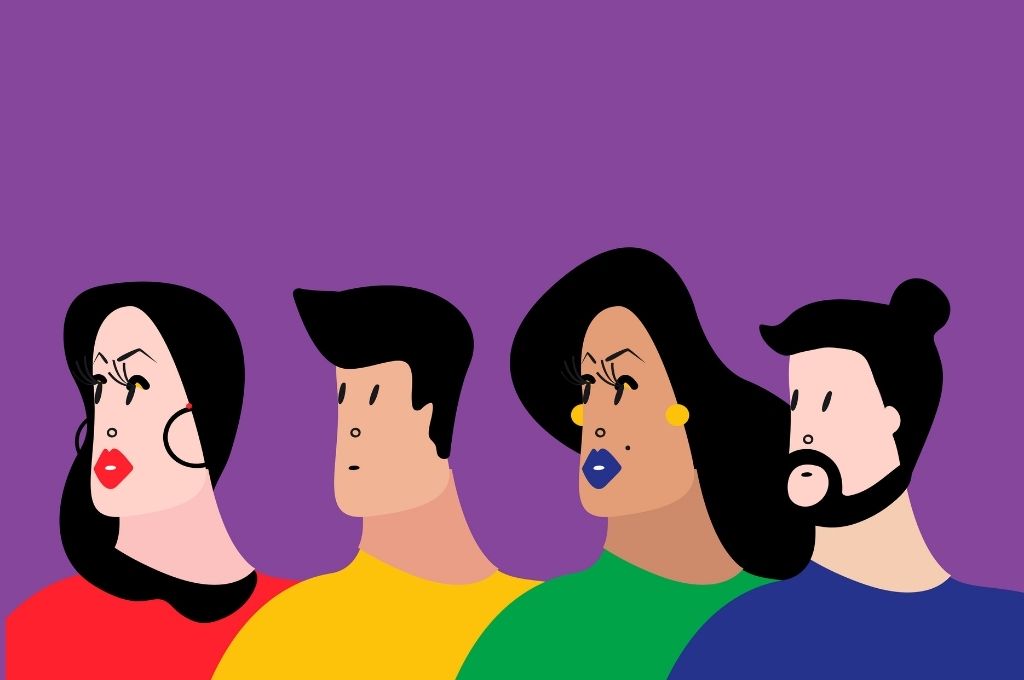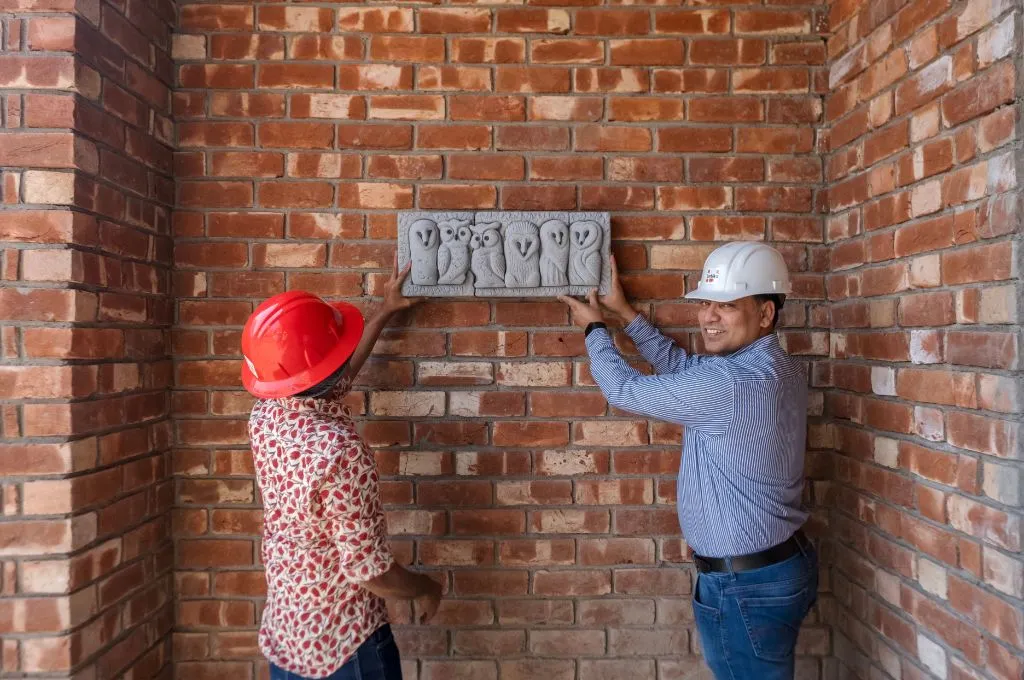The terms ‘gender’ and ‘sex’ have continued to mystify people. While they are still used interchangeably, more and more people are beginning to understand that the two are different—sex is anatomical and gender is social.
In the current discourse around gender, two prominent themes have come up—one talks about gender as a spectrum (that there are many genders that go beyond the man–woman binary) and the other explains gender as a construct (that is harmful because it dictates norms).
But what does gender mean materially to people from the LGBTQ+ community?

Very often for queer people, certain public spaces become unavailable based on the perceptions of those around them. Even when available, previous incidents of violence that the community has faced make these spaces inaccessible. An example is washrooms, which are neatly segregated into ‘male’ and ‘female’. Public washrooms become sites of harassment and violence for transgender (trans) and non-binary people because they are viewed as trespassers in these spaces. This violence is replicated while using public transport where, for instance, trans women may be subjected to intense scrutiny, frisking, threats, and sexual harassment while travelling.
Given how difficult to navigate public spaces already are, this article looks at concrete steps workplaces can take to ensure that they are not keeping queer people out through their policies and actions. As two non-binary people, we use our lived experience of having worked in a variety of settings to recommend a few things organisations can do to create a queer-affirming workplace.
Four steps organisations can take today
It is only recently that a lot of social sector organisations focused on thematic areas such as education and healthcare have started recognising that intersecting social identities exist everywhere. As more and more people look at their work not just as a social contribution but also as an act of political engagement, members of marginalised communities have been sharing how the development sector must introspect—there is a need for people working in social impact to look at which groups of individuals influence policy and hold the greatest amount of socio-economic capital.
While some people are comfortable with explaining their lived experiences, this is not always the case.
At a more micro level, in a lot of workplaces the effort of ‘educating’ often falls on the person experiencing marginalisation. While some people are comfortable with explaining their lived experiences to other people, this is not always the case. Keeping this in mind, here’s what your organisation can do to avoid a situation in which the onus of being queer-inclusive is placed on queer team members themselves:
1. Train cis-heterosexual team members
Sessions conducted by experts and external facilitators from the LGBTQ+ community can help people who are outside of/unfamiliar with the community and its lived experiences to understand a variety of things, including:
- What it means to use correct pronouns and gender-neutral language, and why it’s important (including the importance of asking team members to correct their co-workers when they make mistakes with other people’s pronouns, and learning how to self-correct as well). This also includes not deadnaming people or asking them about their bodies.
- The importance of not outing team members. This follows the basic principle of consent, as sharing someone’s identity without their permission is a form of violation. It can result in the person facing microaggressions, especially in informal spaces where employees discuss more sensitive or personal topics.
- How not to assume that people are comfortable explaining what their gender or sexuality ‘means’. Asking queer people to repeatedly explain their identities puts them in a position of having to justify who they are or explain something they might be struggling to articulate themselves. This acts as a double burden—they are asked to work on issues of gender and education while educating their own team about their identities.
2. Revisit hiring practices
Hiring more people from different communities can help an organisation move from token representation to actual inclusion. Organisations making an effort to recruit and retain people from the LGBTQ+ community can take the following steps:
- Conduct annual hiring and retention audits. Taking stock of how many people from the LGBTQ+ community are employed by the organisation, how many hold key decision-making roles, and how many feel safe within the organisation is crucial for organisations who want to be more inclusive. The audits should be conducted by an external organisation working on gender so that the identities of respondents remain anonymous. It should also include both quantitative and qualitative data—looking at the specific policies the organisation has drafted to be a queer-affirming space, and the implementation of these policies.
- Send job hiring notifications to LGBTQ+ groups that work on gender as well as queer/feminist collectives. Examples of these include Q-rious and Feminism In India.
- Remember that the one queer person you know does not speak for all queer people. It is irresponsible to put the onus of representation on a single person as it creates a situation where an entire community’s abilities are judged by one person’s performance—which can then affect the hiring of more people from the community.
- Revisit anti-discrimination policies at regular intervals and share them publicly on a website so that queer individuals looking for a job know they can apply. Additionally, mention steps that you have taken not only to address discrimination but also to create a workplace that is affirming.
3. Create gender-neutral spaces
- Consider having a gender-neutral or all-gender washroom in addition to the traditional ‘male’ and ‘female’ ones. Another option is to have individual gender-neutral cubicles instead of, or in addition to, large washrooms that are divided by gender.
- Removing gender-specific dress codes.
- Look at application forms or any other forms that team members are expected to fill out and assess whether space has been given for trans and non-binary people to assert their identity. This can be done by asking people to fill in their gender instead of their sex and providing gender options that go beyond ‘man’ and ‘woman’, or by removing the question altogether. For a lot of trans and non-binary people, it is difficult to get their names and pronouns changed on official documents.
- Revisit Prevention of Sexual Harassment Act (POSH) and other such policies to check if they are gender neutral and leave/benefits policies to ensure they are affirming of all family situations.
4. Listen to members of the LGBTQ+ community
Create systems to listen to your LGBTQ+ team members. Anonymous surveys, for example, are one way of getting feedback on what measures the organisation can take to be more inclusive. Moreover, you can speak with other organisations to learn about the systems and practices they have put into place and see which of them can be adopted by you.
It is also imperative to have queer people in more senior leadership roles. Having a diversity of voices in decision-making positions will ensure that a team’s vision, strategy, and execution remain inclusive.
—
Know more
- Learn about why inclusion audits are important and how they can be conducted.
- Follow these steps to ensure that your workplace is trans-inclusive.
- Read the ‘India Workplace Equality Index’ report to get a sense of workplace progress on LGBTQ+ inclusion in the country.






